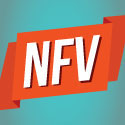Details coming out at this week's OpenStack Summit focus on how the carrier and its vendors – Red Hat, Dell and Big Switch – are pushing open source.
April 25, 2016

Verizon today is offering further details of its NFV architecture, which is now being billed as the industry’s largest known NFV OpenStack cloud deployment, at the OpenStack summit in Austin. And the focus is very much on what Verizon and its three vendors are doing to push the open source envelope in developing carrier-grade solutions.
This is not Verizon Communications Inc. (NYSE: VZ)'s first discussion of the 18-month effort to connect five US data centers in an NFV-SDN infrastructure. Chris Emmons, director of network infrastructure planning, provided many of the details at the Open Networking Summit in March, and in an LRTV interview as well. The network operator started formal testing in the summer of 2015, began deployment in August and turned up its first production sites in December. (See Inside Verizon's 1st Production SDN-NFV.)
Today's announcement focuses on the OpenStack pod-based design, and the ability of Verizon and its vendors -- Red Hat Inc. (NYSE: RHT), Dell Technologies (Nasdaq: DELL), and Big Switch Networks -- to integrate open source elements in a way that provides the resiliency, security and visibility of a carrier network with both network and bandwidth flexibility. The four companies developed the pod-based design and went from concept to deployment in the data centers in less than nine months.
"Part of what we are trying to do is drive the open source solution," Emmons tells Light Reading in an interview. "We don't want to have a Verizon version because that takes away from all the economies of scale that we are wanting to achieve. We have taken all of these components -- the commodity servers and white box switches and open source software and we have combined it into a solution for Verizon that provides us with substrate for our next-gen networks."
That integration process is critical, he adds, taking "all the capabilities for these companies and integrating them to produce the results that we want."
Emmons says Verizon worked with RedHat at what he calls "the bleeding edge of their 7.0 release," and had a hand in getting that release ready for prime time. "We wanted it early, being out on that bleeding edge is where we are making this new space," he says. "If there was a challenge to it, it was just having the technology catch up to the expectations, and finding the gaps and then solving those gaps." That process was all handled via an open source process and thus moved quickly, Emmons notes.
The Verizon exec acknowledged the carrier industry's ongoing concerns about OpenStack and whether it's ready for prime time, admitting "OpenStack is not perfect -- it's a work in progress and you have to take it for what you get."
Learn more about real-world NFV strategies and the challenges of orchestration at our upcoming Big Communications Event in Austin, Texas, May 24-25. You can register now.
Verizon's approach is to implement what is available and work with Red Hat to help get the changes in place that a carrier needs, being careful to have everything that the Verizon team develops fed back into the upstream process.
"We don't want to fork OpenStack, we need to keep everything in the mainstream," Emmons says. "A lot of people will still say OpenStack is not carrier ready and from a purist perspective that is probably true. But if you take care in the way you implement and deploy and operate and if your applications are written to take advantage of that infrastructure, it is ready to do some things. Our plan is get it out there and get it working and we are going to continue to improve on it."
According to the announcement, Verizon's NFV network is based on OpenStack with Red Hat Ceph Storage and a spine-leaf fabric for each pod controlled through a Neutron plugin to Red Hat OpenStack Platform. Big Switch provides the SDN controller software managing Dell switches, which are orchestrated by Red Hat OpenStack Platform.
As Emmons noted at ONS, Verizon has the use of Open Compute Platform pods in its future roadmap.
The spine-leaf fabric lets Verizon connect each the top of rack switches in its data centers -- referred to as leaf switches -- to as many different spine networks as it chooses, Emmons says. "That gives you a hierarchical connection into those networks but it also gives you east-west capabilities between the racks," he notes. "Once you hit one of those spines, you can drop back down into a top-of-rack switch. That keeps routes between the servers short, which is why it has been preferred for data center implementation. We are adding the SDN component to it, making it a programmable fabric."
— Carol Wilson, Editor-at-Large, Light Reading
You May Also Like



.jpeg?width=300&auto=webp&quality=80&disable=upscale)





